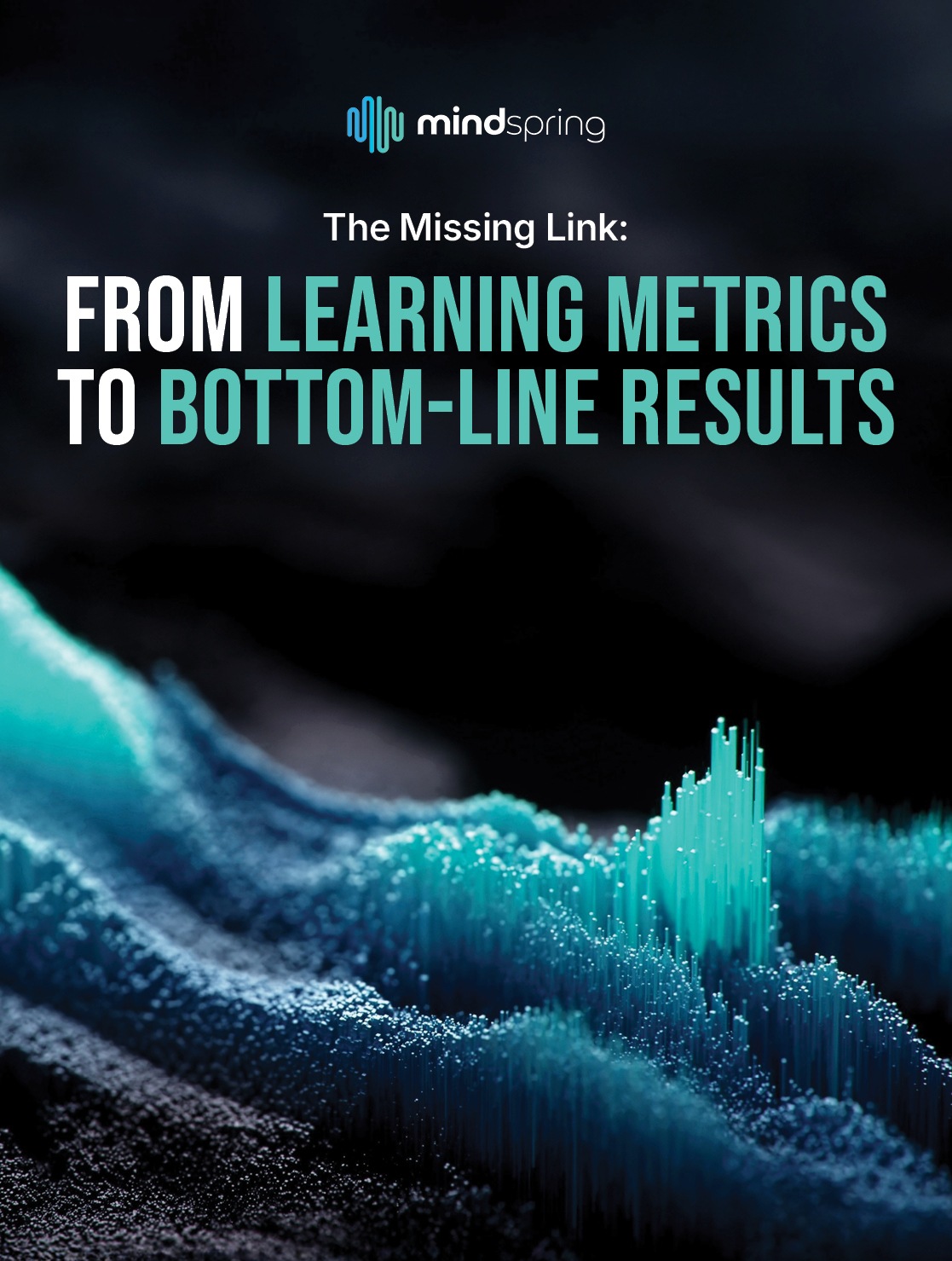The Power Of Data Storytelling
Successful ROI communication isn't about overwhelming stakeholders with numbers—it's about crafting stories that make those numbers meaningful. The most effective L&D professionals understand that behind every metric is a human story, and behind every percentage point is a business transformation.
Consider two ways to present the same training program results:
Version 1 (Data Only): "Our safety training program achieved 95% completion rates with an average assessment score of 87%. Post-training incidents decreased by 23% over six months."
Version 2 (Data + Story): "Sarah, a warehouse supervisor, completed our safety training in March. Three weeks later, she noticed a coworker about to lift a heavy box incorrectly and intervened with the techniques she'd learned. That single intervention potentially prevented a back injury that could have cost us $40,000 in workers' compensation claims. Sarah's story represents our 23% reduction in incidents—real people, real prevention, real savings."
The second version transforms abstract percentages into relatable human impact while maintaining the quantitative foundation that executives need.

Understanding Your Audience
Different stakeholders require different approaches to ROI communication. Here's how to tailor your message:
C-Suite Communications
Executives want the bottom line upfront, followed by the proof. Lead with business impact, use familiar financial language, and connect learning outcomes to strategic priorities.
Structure: Business impact first, methodology second, learning metrics third.
Example dashboard elements:
- Revenue impact: $2.3M increase attributed to sales training
- Cost avoidance: $890K in prevented safety incidents
- Efficiency gains: 15% reduction in customer service resolution time
- Strategic alignment: Training directly supports company's customer experience initiative
HR Leadership
HR leaders need to balance business results with people development. They appreciate both the hard numbers and the human element of your story.
Focus areas:
- Employee engagement and retention improvements
- Skill development progression
- Career advancement outcomes
- Cultural transformation indicators
Operational Managers
Front-line managers want to see how training translates to daily operational improvements. They're interested in productivity gains, quality improvements, and team performance changes.
Key metrics:
- Process efficiency improvements
- Error rate reductions
- Team performance comparisons
- Individual skill assessments and applications
Visual Storytelling That Matters
The right visualization can transform complex data into instant understanding. Here are the most effective approaches for different types of ROI stories:
Before-And-After Comparisons
Use side-by-side charts to show the transformation your training created. Pair quantitative changes with qualitative quotes from participants.
Example: A manufacturing company's quality training program showed a 31% reduction in defect rates. The visual included production line photos and this quote from a floor supervisor: "Before the training, we were reacting to problems. Now we prevent them. My team takes pride in getting it right the first time."
The Journey Map
Show the progression from learning to business impact over time. This helps stakeholders understand that ROI isn't always immediate but builds momentum.
Timeline Visual: Month 1 (Training completion), Month 2 (Initial behavior change), Month 3 (Measurable performance improvement), Month 6 (Full ROI realization)
Comparative Analysis
Demonstrate the difference between trained and untrained groups or before-and-after scenarios. Include confidence intervals to show statistical significance.
Predictive Modeling Displays
Use trend lines and forecasting charts to show projected future impact. This transforms ROI measurement from backward-looking reporting to forward-thinking planning.
The Qualitative-Quantitative Balance
The most compelling ROI communications seamlessly blend quantitative proof with qualitative meaning. This approach answers both "what happened" and "why it matters."
Collecting Impactful Stories
Systematic story collection should be part of your measurement process:
- Structured interviews with program participants 30, 60, and 90 days post-training
- Manager feedback sessions focusing on observed behavior changes
- Customer interaction recordings showing improved service quality
- Peer nominations for employees who applied training effectively
Crafting Compelling Quotes
The most powerful quotes connect personal transformation to business outcomes:
Weak Quote: "The training was really good and I learned a lot."
Strong Quote: "The conflict resolution techniques I learned helped me turn around a client relationship that was headed for cancellation. That account is now worth $200K annually, and the client specifically mentioned our improved communication in their renewal letter."
Balancing Stories And Statistics
Use the "sandwich method": Start with a human story, provide the supporting data, then close with another human element or forward-looking implication.
Example Structure:
- Opening story (30 seconds): Individual transformation
- Supporting data (60 seconds): Program-wide metrics
- Closing impact (30 seconds): Broader organizational benefit
Building Credibility Through Transparency
Stakeholders trust ROI communications that acknowledge limitations and explain methodology clearly.
Addressing Methodology Questions
Be prepared to explain:
- How you isolated training impact from other variables
- What assumptions you made in your calculations
- Where you used conservative estimates vs. aggressive projections
- What factors might have influenced results beyond training
Handling Skepticism
When stakeholders question your results:
- Acknowledge the complexity: "You're right that multiple factors influence these outcomes."
- Explain your approach: "Here's how we isolated the training impact..."
- Provide context: "Even if we're only 50% accurate, the ROI is still significant."
- Offer additional validation: "We can conduct a control group study to strengthen these findings."
Technology Tools For ROI Communication
Modern dashboard and reporting tools can automate much of your ROI storytelling:
Real-Time Dashboards
Create living documents that update automatically with new data. Include:
- Key performance indicators with trend arrows
- Recent success stories or quotes
- Progress toward ROI targets
- Comparative performance metrics
Interactive Presentations
Use tools that allow stakeholders to explore data themselves:
- Drill-down capabilities from summary to detail
- Filter options for different time periods or departments
- Scenario modeling for "what-if" questions
Mobile-Friendly Reports
Ensure your ROI communications are accessible on any device. Executives often review reports during travel or between meetings.
Turning ROI Data Into Strategic Advantage
The ultimate goal of ROI communication isn't just reporting—it's influencing future decisions and securing resources for L&D initiatives.
Budget Justification
Transform historical ROI data into compelling budget requests:
- "Based on our 300% ROI from safety training, expanding to all locations would generate an additional $1.2M in savings."
- "The leadership development program's 40% reduction in voluntary turnover saves $2.3M annually in replacement costs."
Strategic Planning Integration
Position L&D as a strategic business partner by connecting training ROI to organizational objectives:
- Link skills development ROI to market expansion plans
- Connect leadership training outcomes to succession planning needs
- Demonstrate how training ROI supports digital transformation initiatives
Continuous Improvement Advocacy
Use ROI data to advocate for program enhancements:
- "These results show strong ROI, but we identified three areas for improvement that could increase impact by 25%."
- "The data suggests optimal timing for reinforcement activities to maximize retention and application."
Creating Your ROI Communication Framework
Develop a systematic approach to ROI communication that ensures consistency and impact:
- Audience analysis: Map stakeholder information needs and preferences
- Story bank development: Systematically collect and organize compelling narratives
- Visual template creation: Develop reusable chart and dashboard templates
- Presentation frameworks: Create structured approaches for different communication contexts
- Feedback integration: Continuously improve based on stakeholder response
Moving Forward
Effective ROI communication transforms L&D from a cost center to a strategic business driver. By combining rigorous measurement with compelling storytelling, you create advocates for learning throughout your organization.
Our eBook The Missing Link: From Learning Metrics To Bottom-Line Results explores how these measurement and communication capabilities position L&D for the future, examining emerging trends and evolving expectations for learning's role in organizational success.
Remember: The goal isn't to prove that training works—it's to demonstrate how learning drives the business outcomes that matter most to your organization. When you achieve that level of communication effectiveness, ROI becomes more than a measurement—it becomes your competitive advantage.









